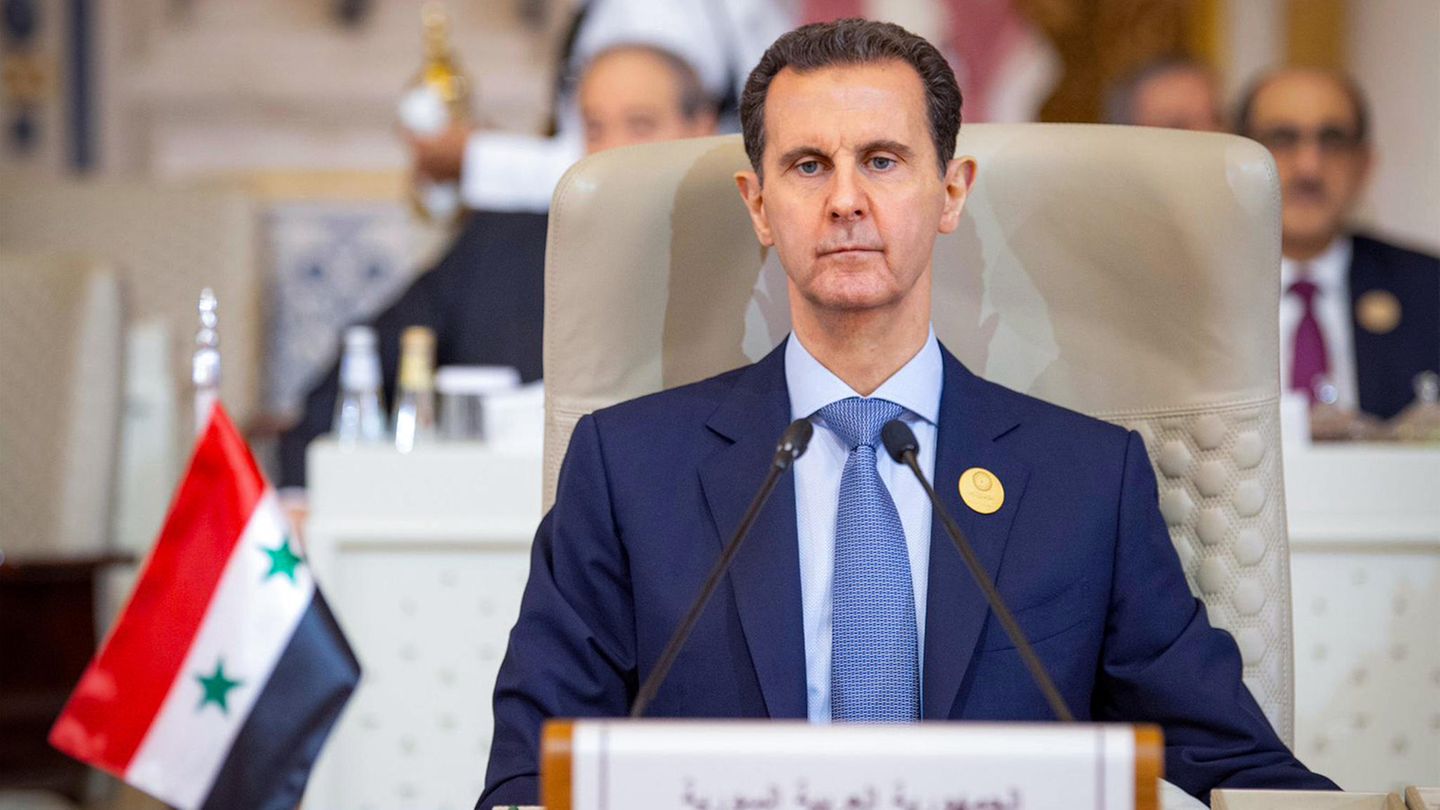Overthrow of the government in Damascus
What is known about Bashar al-Assad’s escape from Syria
Copy the current link
Bashar al-Assad has fallen: After almost 25 years in power, Syria’s president has fled. He left the country by plane. But where to?
He ruled Syria with a hard hand for almost a quarter of a century – after Islamist militias came to power, President Bashar al-Assad has now hastily fled the country. It is not known where he is staying; his departure was carried out in the strictest secrecy. What is known so far about Assad’s escape from Syria:
Bashar al-Assad: Secret departure with a private jet
At 10 p.m. (local time; 8 p.m. CET) a private plane takes off from Damascus International Airport. According to the Syrian Observatory for Human Rights, Syrian President Assad, who is fleeing the insurgents, is on board. It is not known where the flight is going. Shortly afterwards, government troops and security forces withdrew from the airport.
Within a few hours, the fighters first announced the overthrow of the “tyrant” and the liberation of the Syrian capital – and called on millions of Syrians who had fled abroad to return to a “free Syria”.
According to the head of the Syrian Observatory, Rami Abdel Rahman, three countries are possible for Assad’s escape destination: According to him, Assad could find shelter in Russia – its close ally Moscow supported the ruler militarily in the civil war and also flew air strikes in defense last week his government. The Russian Foreign Ministry confirmed that Assad had left Syria, but did not provide any information about where he went.
According to Rahman, Iran, which is also an ally of Syria and had sent military advisers and armed forces to support Assad, could also grant the president exile. Finally, according to his information, Assad could also have fled to the United Arab Emirates. In 2018, Abu Dhabi became the first Gulf state to restore diplomatic relations with Syria after they were broken off due to the civil war.
Government soldiers take off their uniforms
As the news of Assad’s overthrow spread, soldiers in Damascus took off their uniforms, as witnesses told the AFP news agency. An eyewitness reported dozens of abandoned army vehicles in the Masseh district, where several military facilities and embassies are located.
There is currently no official statement from the army. However, soldiers tell AFP that they were asked to leave their positions and go home.
In the first two days of the major offensive launched by the Islamist militias at the end of November, their fighters and government troops fought in battles that resulted in numerous deaths on both sides.
Later, the insurgents were able to advance surprisingly quickly and take the cities of Aleppo, Hama and Homs without encountering “significant resistance” from the army, as the Syrian Observatory explained. The capital fell on Sunday morning.
The Syrian civil war began in 2011 after Assad used violence to suppress anti-government protests. Half a million people were killed and millions more displaced. The army also lost around half of its original 300,000 soldiers.
According to experts, the weakness of the Syrian army was also due to the lack of support from allies Russia and Iran.
On Sunday morning, a source close to the pro-Iranian Hezbollah militia, also allied with Syria, reported that its fighters had withdrawn from positions near Damascus and in an area on the border with neighboring Lebanon. According to the information, there were also weapons depots in these areas.
Who will take power in Syria now?
On Sunday, Islamist fighters are proclaiming a “new era” in Syria. Syrian Prime Minister Mohammed al-Jalali, who took office in September, declared on Facebook that he was ready to work with a new leadership chosen by the Syrian people.
Abu Mohammed al-Jolani, commander-in-chief of the Hajat Tahrir al-Sham (HTS) militia, which is leading the fighting in Syria, calls on his fighters to stay away from public facilities. It is said that the facilities must remain under the control of the “former Prime Minister” until the official handover.
The defeat of the Syrian army leaves behind several parties to the conflict with different interests in the country, which has been fragmented by the war, and which are also supported by different actors at home and abroad.
The images of a historic day in Syria
“Hafiz perish,” is written on the fallen statue of the former dictator in Hama. Hafiz al-Assad came to power in a coup in 1970, and his face, together with that of his son and successor Bashar al-Assad, adorned countless posters, murals and statues in the country. Now Syrians are celebrating a future without the Assads
© xJumaxMohammadx / Imago Images
Back
Further
The biggest challenge will be “rebuilding the Syrian state and overcoming a phase of chaos and fragmentation,” emphasizes Mohanad Hage Ali of the Carnegie Center for the Middle East.
So far, the insurgent militias have been “conscientious in dealing with minorities and their prisoners,” he explained. He hopes that this will also be “reflected in the reconstruction of state institutions.”
AFP
che
Source: Stern
I have been working in the news industry for over 6 years, first as a reporter and now as an editor. I have covered politics extensively, and my work has appeared in major newspapers and online news outlets around the world. In addition to my writing, I also contribute regularly to 24 Hours World.




